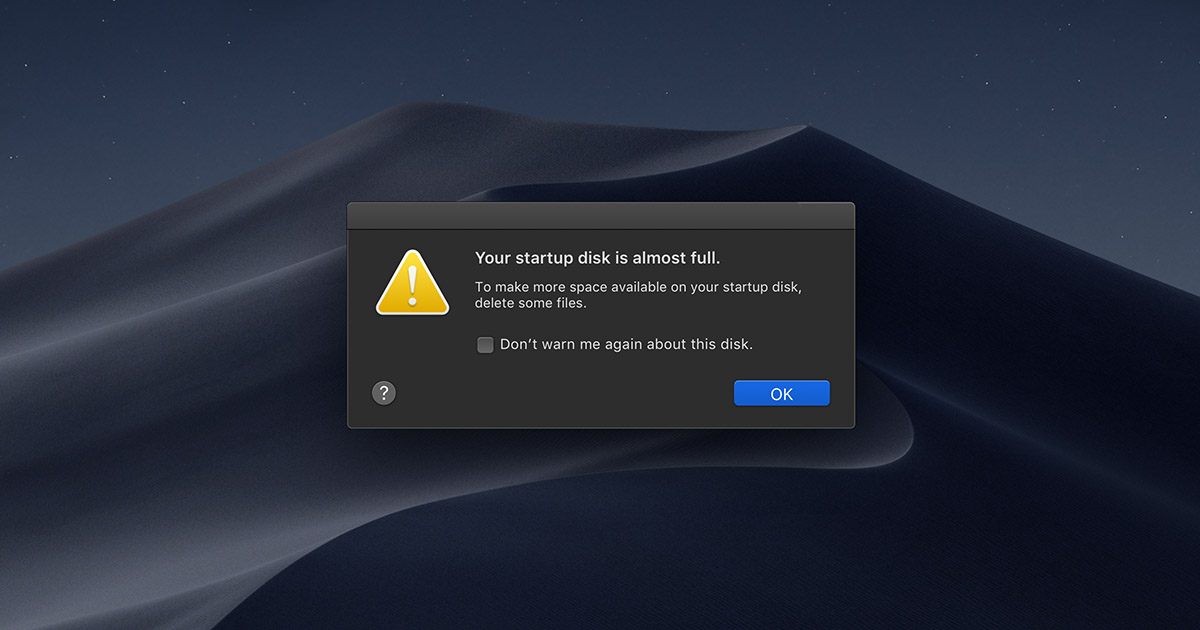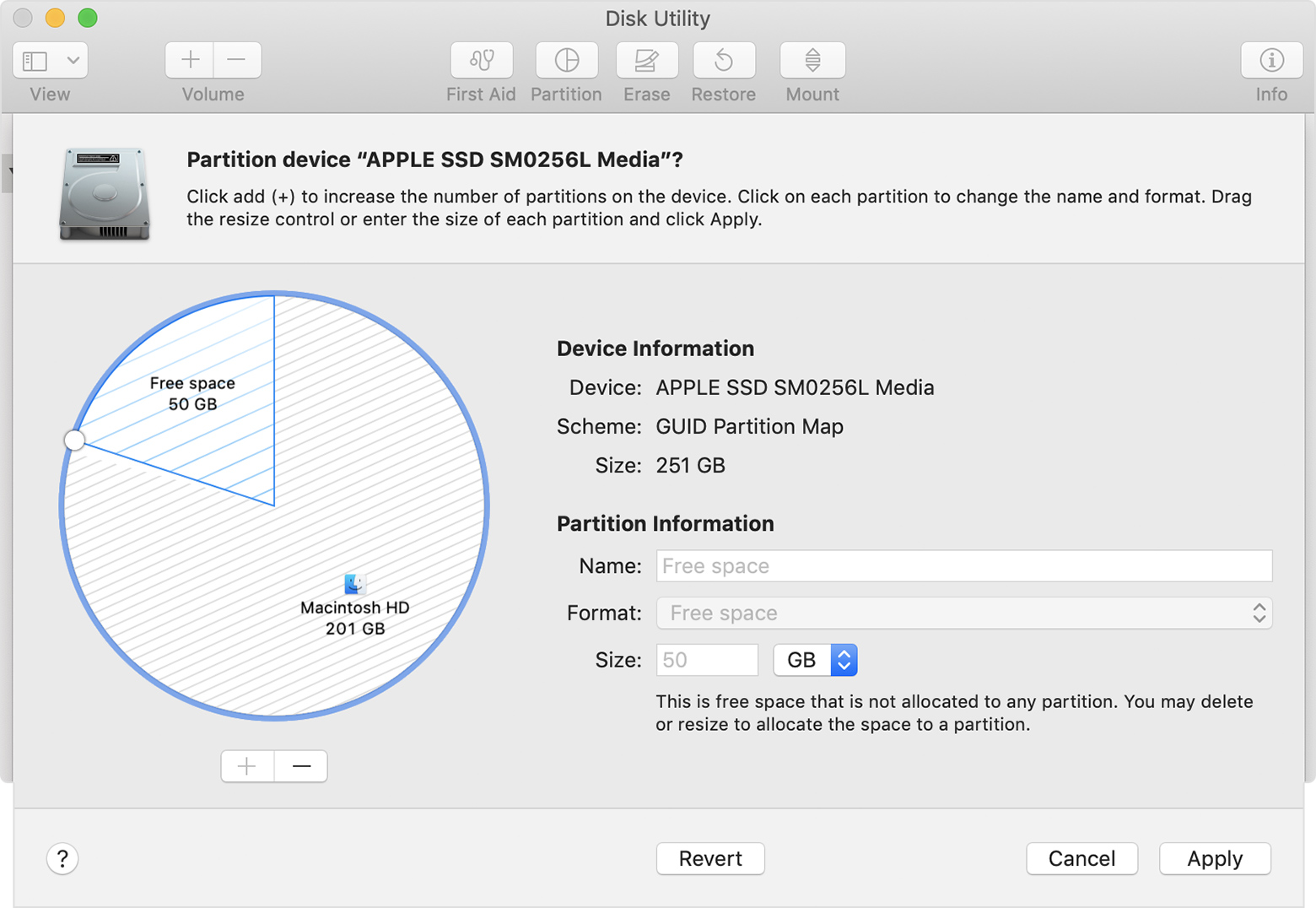- Free Up Space In MacOS – Steps To Fix Mac Disk Space Issue. In spite of its amazing features, the Macbooks hard drives fill up quickly after storing few data on it. We are unable to save a massive amount of data in the MacBooks. But we have here discussed some solution through which you can quickly free up space in MacOS and MAC OS 10.
- One great way to free up space is to delete the images associated with the Messages you've received on your Mac. You can do this by clicking on the Apple Logo About this Mac Manage and then.

You can easily free up storage space on your Mac. If you see a 'Update Not Found' error, see this article. Make sure that you have an Internet connection to update your Mac. You can troubleshoot your connection. An update may take some time. Just waiting may fix your problem. Sometimes more than a few hours.
| Click here to return to the 'Spaces in file and directory names' hint |
Your default shell should be set up for tab-completion, which makes typing these ghastly escape sequences easier (i.e., helps to make all those backslashes).
Tab-completion is really useful anywhere in the shell though.. all it means is that when you've typed part of a word and then push 'tab', the shell will try to complete the rest of the word in an intelligent way. For example, let's say you have a directory with the files:
aFile
anotherFile with Spaces in THe NAME
doc1
doc2
Let's say you want to use the 'less' command to view the contents of aFile. You can type..
less aFile
less aF[tab]
In the 2nd case, after typing those two unique letters and tabbing, the rest of the file name will be completed.
If you want to do something with that 2nd file with the scary name, it's easy to just type:
less an[tab]
And it will fill in all the junk necessary for you.
For the 3rd and 4th files, since their names are so similar you really just need to type out the full names..
I hope this is news to someone ;)
Just realized that I forgot to mention how this works with directory navigation. Here's an example:
to do this properly:
cd /Users/username/temp/directory with spaces
you could type this:
cd /U[tab]/use[tab]/temp/dir[tab]
The tab positions are completely arbitrary. As long as what you've typed is unique the shell will know what to fill in. The win here really comes with the last directory name.
You have to complete each directory name in the path. It will complete the name of a directory in the path you've specified so far. (ie. cd /U[tab] will complete to cd /Users)
I have always just put the * symbol in place of spaces and that has worked fine for me. That way You can use directories with spaces in them. Enter castle frankenstein mac os.
Fix It Space Mac Os Takes
I have no idea why I tried this, but when I ran into the space problem, I just surrounded the title in question with double quotes, as in CD /Users/unohoo/'My files' and it worked fine repeatedly.
Will the computer get past the blank screen if you try SafeBoot mode where you hold the shift key down through startup? If successful, you'd probably have to also log in to the admin account. Then the computer could operate with a reduced system, and that means volume won't work, internet won't work and other stuff is off.

You can easily free up storage space on your Mac. If you see a 'Update Not Found' error, see this article. Make sure that you have an Internet connection to update your Mac. You can troubleshoot your connection. An update may take some time. Just waiting may fix your problem. Sometimes more than a few hours.
| Click here to return to the 'Spaces in file and directory names' hint |
Your default shell should be set up for tab-completion, which makes typing these ghastly escape sequences easier (i.e., helps to make all those backslashes).
Tab-completion is really useful anywhere in the shell though.. all it means is that when you've typed part of a word and then push 'tab', the shell will try to complete the rest of the word in an intelligent way. For example, let's say you have a directory with the files:
aFile
anotherFile with Spaces in THe NAME
doc1
doc2
Let's say you want to use the 'less' command to view the contents of aFile. You can type..
less aFile
less aF[tab]
In the 2nd case, after typing those two unique letters and tabbing, the rest of the file name will be completed.
If you want to do something with that 2nd file with the scary name, it's easy to just type:
less an[tab]
And it will fill in all the junk necessary for you.
For the 3rd and 4th files, since their names are so similar you really just need to type out the full names..
I hope this is news to someone ;)
Just realized that I forgot to mention how this works with directory navigation. Here's an example:
to do this properly:
cd /Users/username/temp/directory with spaces
you could type this:
cd /U[tab]/use[tab]/temp/dir[tab]
The tab positions are completely arbitrary. As long as what you've typed is unique the shell will know what to fill in. The win here really comes with the last directory name.
You have to complete each directory name in the path. It will complete the name of a directory in the path you've specified so far. (ie. cd /U[tab] will complete to cd /Users)
I have always just put the * symbol in place of spaces and that has worked fine for me. That way You can use directories with spaces in them. Enter castle frankenstein mac os.
Fix It Space Mac Os Takes
I have no idea why I tried this, but when I ran into the space problem, I just surrounded the title in question with double quotes, as in CD /Users/unohoo/'My files' and it worked fine repeatedly.
Will the computer get past the blank screen if you try SafeBoot mode where you hold the shift key down through startup? If successful, you'd probably have to also log in to the admin account. Then the computer could operate with a reduced system, and that means volume won't work, internet won't work and other stuff is off.
Can you boot into a recovery partition, if the installed system is OS X 10.7.5 or later? If not, does the computer have an optical drive and do you have an install DVD for the current system if 10.6 or before?
How did you use Disk Utility to 'repair disk permissions' ? If booted from a Recovery partition and OS X Utilities, that method offers 'repair disk' too.
There is a chance the hard disk drive has failed, and if you had a replacement drive of correct specs, plus an external enclosure for the one in your computer to be put in later, at a later time you could attempt to access the Mac's drive to reclaim any libraries or otherwise lost content.
There are kits one can buy, such as one from OWC macsales online that can include a replacement HDD and an enclosure; so it is possible to prepare the new drive for use in the Mac, or swap drives; and end up with the old one inside the enclosure where you can attempt to access content later, or migrate some back in.
Since there are several unknowns about your model MacBook that affect advice, the blanket article on this topic starts with Support..
•Mac OS X: Gray screen appears during startup
Fix It Space Mac Os X
A new installation creates a new system folder, adding to the overall situation of insufficient capacity in the computer's hard disk drive. If you have libraries of iTunes, iPhoto, iMovie, and saved video, etc you may have to see about getting an external drive (USB) and learn how to move libraries into the external so you can later access them from the computer's applications that use them, then delete the ones inside the computer. Or get the stuff to replace the internal HDD, and put the original HDD inside an enclosure for later migration.
There is a lot unknown, so if SafeBoot can help get into the computer, that may be a start. To get in.
Fix It Space Mac Os Pro
If the computer happens to be a model with FireWire ports, and your second Mac computer has them also, then you could start the troublesome one in Target Disk Mode so it appears to the healthy one as an external HDD. You then could attempt to repair the failing MacBook's HDD and also attempt to remove your wanted files. Drag and drop is not a good way, but you should have a backup system in place, where copies are correctly made; or where you have a backup clone (it can boot the computer from external self-powered HDD) for emergency.
Fix It Space Mac Os X
At least you have a second computer & internet..
Good luck & happy computing! 🙂
Mar 1, 2014 10:55 PM

